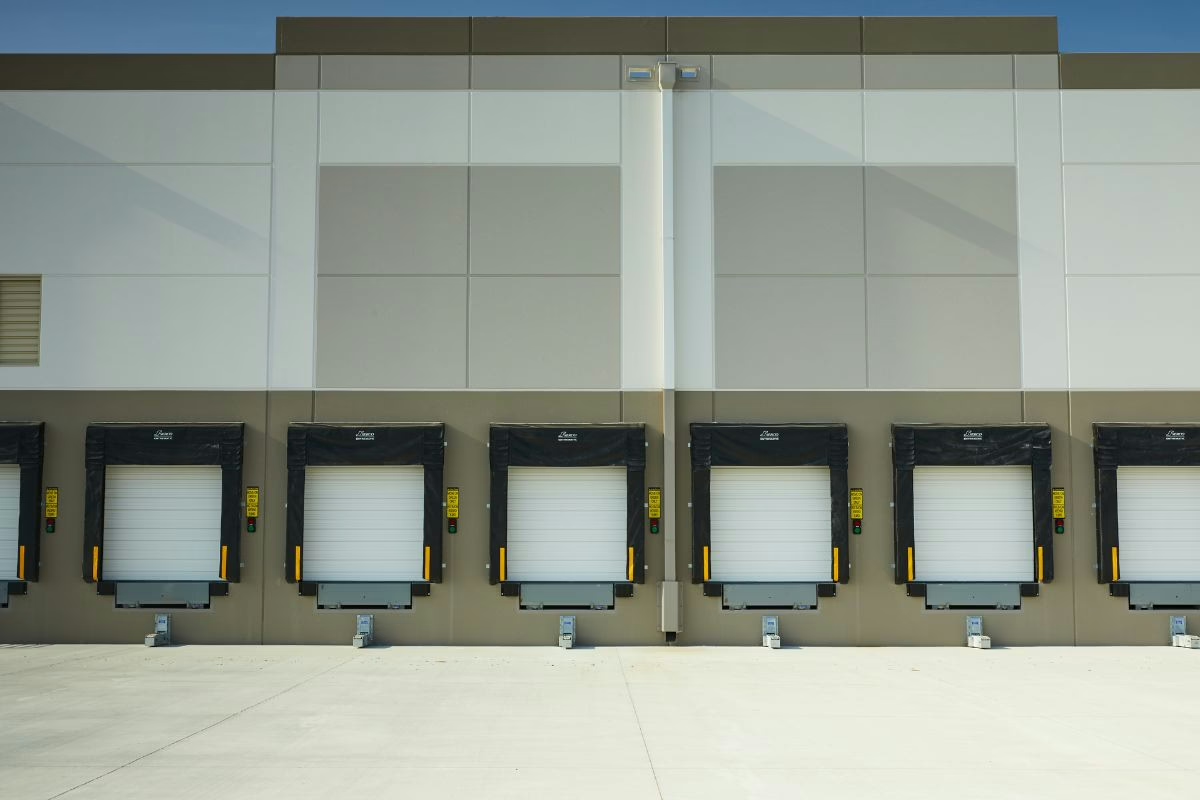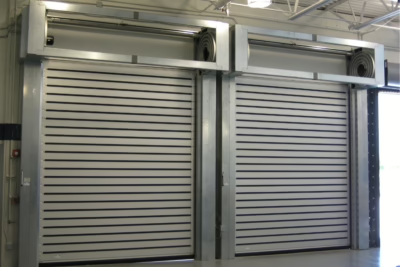As trailer fleets evolve, loading docks must be able to accommodate a wider variety of vehicle types – from low-profile reefers and liftgate trailers to double-drop step decks. For high-throughput distribution centers, food-grade storage, and manufacturing facilities, ensuring compatibility across trailer types is essential for operational speed, safety, and compliance.
This guide outlines how to future-proof your loading dock to keep pace with trailer diversity and outlines key equipment upgrades, design considerations, and strategies based on real-world conditions – including those seen in busy markets like Dallas, Toronto, and Tampa where DuraServ operates.
1. Start with a Comprehensive Dock Assessment
Before investing in equipment, conduct a full audit of your existing loading docks. Start by cataloging the types of trailers you currently receive, and note any patterns of delay or misalignment. Review your dock leveler performance, vehicle restraint compatibility, maintenance records, and any past incidents related to trailer fit or movement.
This data will help establish where inefficiencies exist and inform decisions on upgrades that directly impact productivity and safety.
2. Choose Levelers with Height‑Universal Capabilities
Modern trailers vary significantly in bed height. To future-proof your dock, you need a leveler that adapts to multiple trailer profiles without compromising safety or efficiency.
Look for features such as:
- Hydraulic operation with longer reach and smoother transitions
- Extended lips for better bridging of height gaps
- Auto-positioning technology that adapts in real time
- High-cycle durability for frequent trailer turnover
These capabilities ensure seamless loading across everything from low-profile trailers to taller step decks, minimizing manual adjustments and increasing safety.
3. Pair with Restraints That Accommodate Multiple Trailer Types
Vehicle restraints play a critical role in preventing trailer separation accidents during loading. As trailers vary in height and configuration, your restraints must offer flexibility.
Powered hook restraints with vertical tracking can engage ICC bars across a wide range of positions. For even greater adaptability, wheel-based restraints that grip trailer tires work with both liftgate and low-clearance trailers. Interlocking controls that only allow dock leveler engagement once a trailer is secured are highly recommended for facilities with dynamic fleets.
4. Seal the Gap with Adaptable Dock Enclosures
Climate control and cleanliness are critical at the loading dock, especially in cold storage, pharmaceutical, and food distribution environments. But traditional dock seals may not be compatible with varied trailer sizes.
To ensure proper sealing, consider:
- Dock shelters with flexible side and head curtains
- Seal/shelter hybrid systems that provide airtight sealing for variable trailer types
- Foam compression pads with wear-resistant covers to handle repeated contact
- Curtain tensioning systems that maintain seal integrity during windy conditions
These systems help reduce HVAC strain, prevent contamination, and maintain compliance with food or pharmaceutical handling standards.
5. Optimize Layout and Design for Long-Term Flexibility
Equipment upgrades are important, but your facility layout should also support future growth and trailer variation. Standardizing dock height around 48–52 inches helps accommodate most common trailer types, but additional flexibility can come from customized dock ramps, extended wells, or modular platforms.
Facilities anticipating growth should consider high ceiling clearance and vertical-lift doors that allow room for taller trailers. Where space allows, building in extra dock bays or installing double-deep loading zones can provide operational redundancy as traffic increases.
6. Invest in Smart Dock Controls and Diagnostics
Technology now plays a key role in trailer compatibility. Smart dock control panels can sync your leveler, restraints, door, and sensors into a single platform. Some systems automatically adjust equipment based on the incoming trailer type or operator input, while others offer built-in diagnostics to flag issues before they impact throughput.
Smart control systems may include:
- Cycle counters to monitor equipment wear and plan maintenance
- Impact sensors that alert operators to collisions or misalignment
- Programmable interlocks that improve safety compliance
- Central dashboards for dock visibility and performance tracking
These features reduce error rates, improve dock scheduling, and allow real-time adjustments that support a wide range of trailer types.
7. Train Staff on Multi‑Trailer Handling Best Practices
Even with the best equipment in place, poorly trained staff can unintentionally override safety features or misuse systems. Consistent training ensures operators understand how to handle different trailer configurations safely and efficiently.
Make sure teams know how to identify trailer types, engage the correct restraint system, verify dock leveler positioning, and inspect seals for adequate coverage. Facilities with high turnover should provide refresher sessions and visual guides posted at each dock position.
Real-World Example: Future‑Proofing in Dallas
A food distribution facility in Dallas, Texas — one of DuraServ’s busiest service regions — began receiving a higher volume of mixed trailers, including low-profile reefers and regional step decks. The legacy mechanical levelers and basic dock bumpers struggled to support the range of trailer types, leading to loading delays and seal gaps that impacted cold chain performance.
DuraServ retrofitted the dock positions with hydraulic levelers featuring extending lips, wheel-based restraints, and hybrid dock enclosures. After just 90 days, the facility saw a 25% improvement in trailer processing speed and significantly better energy efficiency. Dock-related product incidents dropped to zero, and carrier satisfaction improved thanks to smoother alignment and faster turnaround.
Cost vs. Long-Term Value
While future-proofing requires capital investment, the long-term payoff can be substantial. Facilities that adopt adaptable systems reduce downtime, avoid injury-related expenses, and position themselves to support growth or changes in carrier fleets.
Dock levelers with extended lips, powered restraints, and smart controls may increase upfront costs by 20–30%, but these additions extend lifespan, reduce maintenance calls, and prevent equipment damage – often repaying the investment in less than two years.
Final Thoughts
The trailer mix serving industrial and commercial facilities is more varied than ever. Without the right dock equipment, layout, and safety systems, mismatches between docks and trailers can disrupt operations, pose hazards, and reduce facility efficiency.
To stay competitive, your dock needs to be flexible, safe, and smart. DuraServ helps facilities across North America modernize their dock infrastructure to support a full range of trailer types – from step decks and pup trailers to reefers and high-volume dry vans. Our experts can help assess your current setup and implement scalable upgrades that future-proof your loading operations for years to come.



